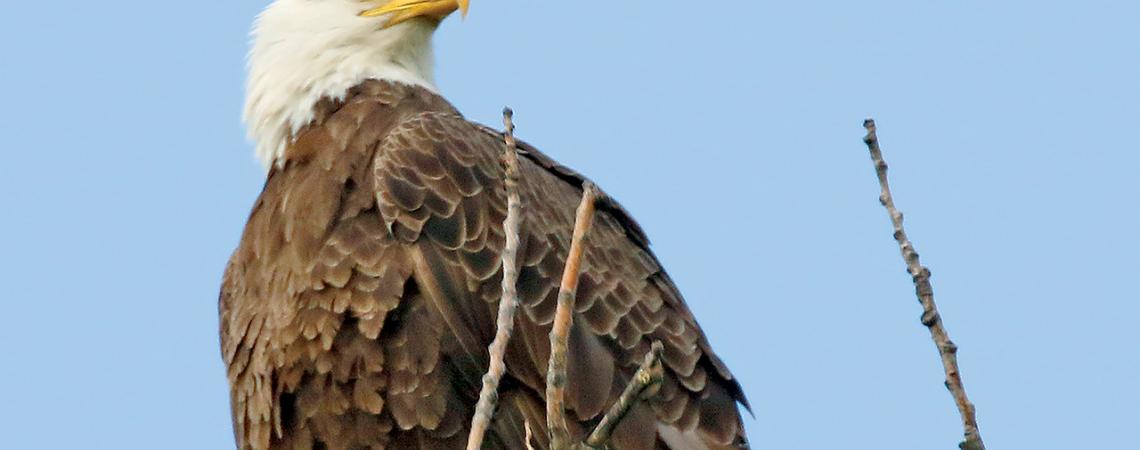Photo by Chip Gross
If you have a concern for wildlife, it’s easy to get caught up in the plight of current endangered and threatened species — so much so that we sometimes forget to celebrate the victories of those species that have stepped back from the brink of extinction or extirpation.
The return of soaring bald eagles to the skies of Ohio and to the nation as a whole is definitely one of those victories.
Bald eagles once were plentiful in the Buckeye State. Though no studies of the population were undertaken until the 1920s, it’s likely that several thousand of the majestic birds nested and fished along the shores of Lake Erie, the Ohio River, and other river systems in between.
The largest bald eagle nest ever recorded in Ohio — the Great Nest — was located along the Lake Erie shoreline near Vermilion.
Constructed in 1891 and enlarged by various pairs of eagles through the years, the nest gradually grew to an amazing 8.5 feet across and 12 feet deep. It was 81 feet off the ground, and when the nest finally blew down in a 1925 storm, it weighed an estimated 2,000 pounds.
Ohio’s bald eagle population began taking a nosedive during the mid-20th century — a result of the pesticide DDT accumulating in the environment. The poisonous compound caused eagle eggs to thin, resulting in breakage during incubation. But when DDT was outlawed for agricultural use in the U.S. in 1972, eagles began their comeback. It was none too soon, as only four nesting pairs remained in Ohio as late as 1979.
One of the wildlife management techniques used to bolster the struggling bald eagle population during the 1980s and ’90s was fostering, or the placing of captive-bred eaglets into wild nests. It was a slow, difficult, expensive, painstaking strategy — but it worked. Today, some 300 bald eagle nests are scattered across the state, and the population is estimated at 700 to 1,000 birds and growing.
Spearheading the recovery effort of Ohio’s bald eagles during the late 20th century was Denis Case, a wildlife biologist with the Ohio Division of Wildlife. Now long retired, Case lives in southeast Ohio, where he has been a member of South Central Power Company since 1974.
“Today, there doesn’t seem to be the general public commitment to environmental issues that was so prevalent back in the 1960s and 1970s,” Case says. “I think people need to be reminded that significant strides can be made and that environmental action does work. The return of the bald eagle, due to pesticide regulation and habitat protection, is a solid example.
“In the 1980s, we set a goal of achieving 20 nesting pairs of bald eagles in Ohio by the year 2000. At the time, I thought that number might represent the maximum nesting population we could ever achieve. We reached that goal in a couple of years — sooner than expected — and I was obviously a little off the mark on how many pairs of eagles the state could ultimately support. Sometimes, it’s nice to be wrong.”
Bald eagles were removed from the federal endangered species list in 2007 and Ohio’s state endangered species list in 2012, but they still have special protections under the federal Bald and Golden Eagle Protection Act.
If you’d like to see a bald eagle in the wild, grab a pair of binoculars and visit Ottawa National Wildlife Refuge or Magee Marsh Wildlife Area. Both refuges are located between Port Clinton and Toledo along State Route 2.
W.H. “Chip” Gross, a member of Consolidated Cooperative, is Ohio Cooperative Living‘s outdoors editor.









